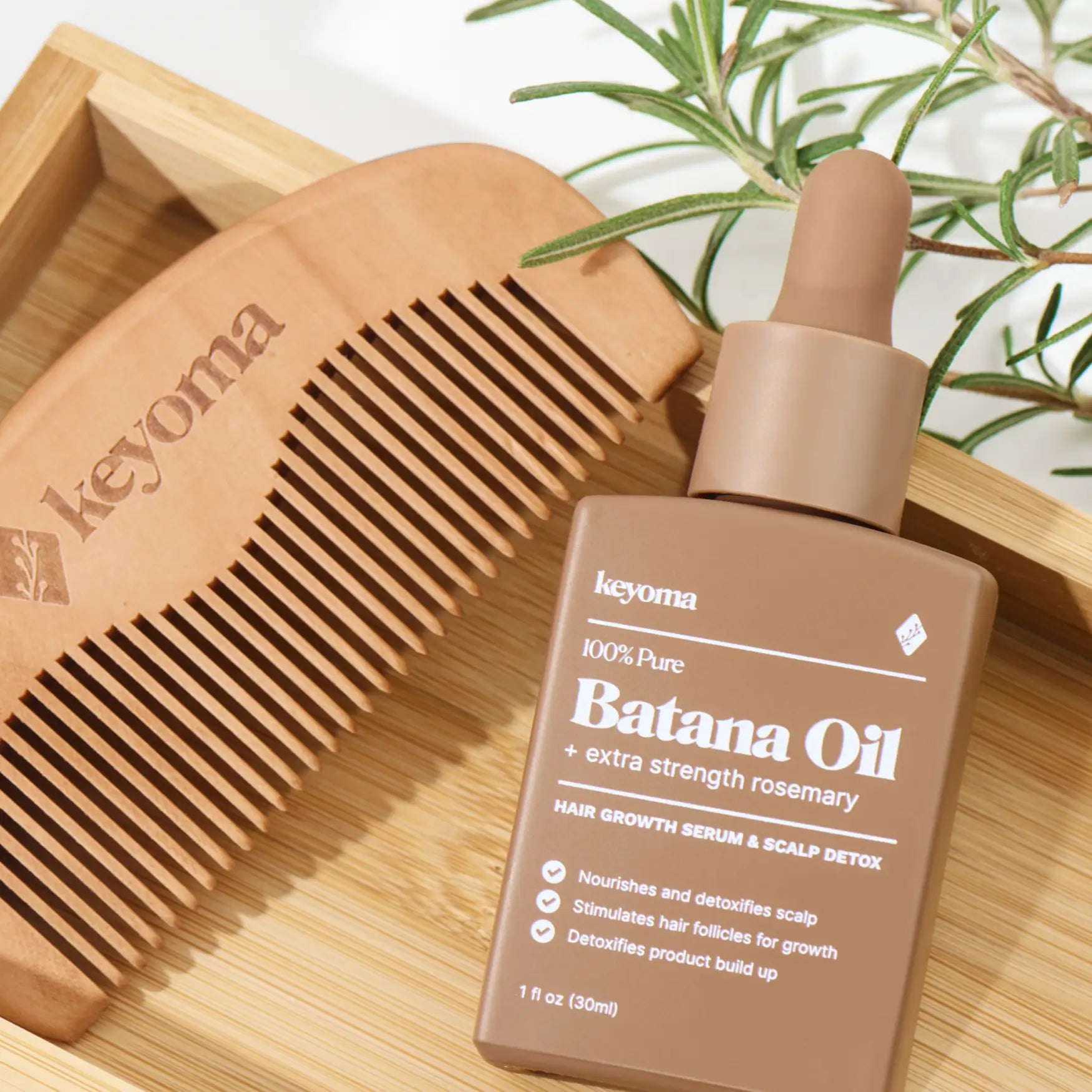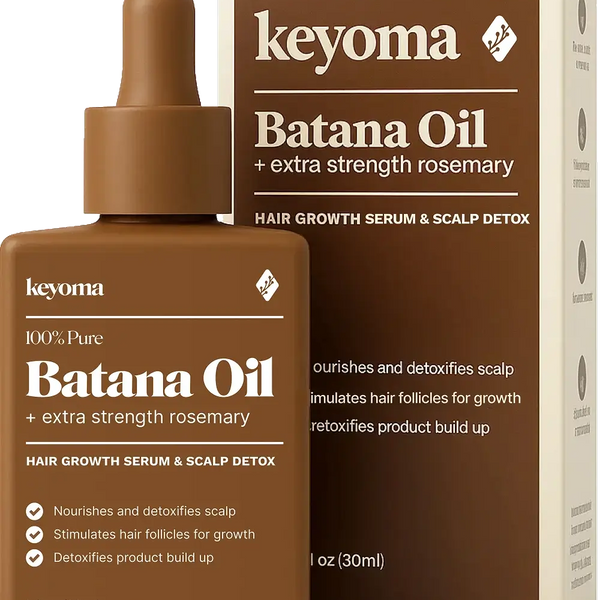In this article
Big hair never goes out of style, yet for many with thick strands it isn’t all glam. More hair often means more upkeep, and thick textures can puff up and frizz, making you wish for a smoother finish. Good news: there are simple tweaks that help you handle thick hair and shape it into styles you actually enjoy.
From picking products that suit thick hair to styling in ways that calm bulk and puff, here’s what to keep in mind.
Key Takeaways
-
Thick hair describes strand texture, not density, and appears across all patterns.
-
Sulfate-free shampoo, consistent conditioning, and cool rinses help reduce frizz and puff.
-
Nylon bristle brushes glide better on thick strands, and serums add smooth protection.
-
Long layers remove weight and bulk, while regular trims prevent split ends.
How to Tell if You Have Thick Hair
Thick hair describes strand texture, meaning each individual hair has a larger diameter. Texture can be fine, medium, or thick (also called coarse). Remember, texture isn’t the same as density, which is how many hairs sit on each square inch of scalp.
With thick hair, single strands feel sturdy or even wiry. When you hold one up to the light and roll it between your fingers, it feels substantial and looks bold. If it feels rough and resists bending, it’s thick and leaning coarse. Know your hair type before commiting to hair care routine.
Some thick strands are still pliable and soft. Because thicker fibers behave differently, they usually need targeted care to stay supple, hydrated, and easy to manage.
Thick strands show up across all patterns: straight, wavy, curly, or coily. You might also see mixed conditions, like healthy roots, drier mid-lengths, and frizzier ends, which can point to heat damage or chemical services such as coloring.
Bottom line? Thick strands of hair need focused care from root to shaft to tip, no matter your pattern or current condition.
What Makes Hair Thick?
Here’s a welcome reminder: a full head of hair often reflects overall health. Your diet, fitness, and genetics all influence what you see. Your genetic makeup sets your hair count, the size of each strand, and their shape.
The average number of hair follicles on a human head is anywhere between 100,000 and 150,000, i.e. an average of 200 to 300 hairs per square centimeter. The diameter of each of these hairs varies from 0.04 to 0.1 mm depending on the person.
Either dense coverage per square centimeter or naturally broad strands can create the look of a thick head of hair. Sometimes you get both, which amplifies the effect. This also explains how some men have hair that appears straight and thick.
Tips to Tame Thick Hair

Plenty of people want hair that’s healthy, thick, and strong, but living with it brings unique challenges. The bounce is gorgeous, yet the extra volume can be unruly. Thick hair often skews frizzy, dry, and stubborn, and it takes ages to dry after a wash.
The upside: you can keep that enviable fullness and still get a sleeker result. With a few adjustments, you can calm bulk and tame flyaways. We’ve gathered practical tips to manage poof and rein in unruly strands.
Replenish Moisture With a Good Conditioner
Condition after every shampoo, the way you moisturize skin after a shower. Hydrating formulas help corral big, unruly hair by adding moisture and smoothing the cuticle.
Skip volumizing lines, including shampoos and conditioners. Those are meant to boost lift, which isn’t helpful when you’re trying to settle thick, heavy hair.
Choose a Sulfate-Free Shampoo
Sulfates are common cleansers that remove dirt and oil effectively. In the process, they can strip too much moisture from hair and scalp, leaving thick hair drier and tougher to manage.
A chemical-free shampoo still cleans well while preserving natural shine. If your hair is thick and curly, the right gentle wash helps you wear tight, well-hydrated curls.
Rinse Hair With Cold Water
Thick hair takes extra intention to manage compared with finer, low-density hair. Details matter, from product choice to the water temperature you use in the shower.
Hot water isn’t ideal for any pattern. It can strip essential moisture and oils, leaving hair static and frizzy and the scalp feeling parched.
Cooler rinses help lock in moisture and lay cuticles flatter, which can make hair look shinier and healthier. It can also soften straw-like texture so it looks less hay-like.
Apply a Smoothing Hair Serum
Hair serums create a light barrier on the surface, shielding strands from sun and pollution while adding a sleek, polished finish. Anti-frizz benefits can boost smoothness, weigh down flyaways, and ease static that causes fuzz.
While they’re often used to enhance shine, some formulas also offer humidity defense so hair stays manageable in shifting weather. Many leave a silky finish and luminous glow without a greasy look.
Avoid Harsh Metal Brushes
It’s easy to overlook your brush, but it matters. Nylon bristles work well for thick hair because they provide control and glide through coarse locks better than metal. Firmer bristles can shorten detangling time while spreading natural oils and applied products.
Consider a Shape-Enhancing Haircut
A shorter cut is a simple way to rein in thick hair. It’s lower maintenance, and you have plenty of options. Pixies flatter thick textures, while a bob with layers can remove weight. Share your goals with your stylist so they can suggest a shape that suits you.
Regular trims also whisk away dry, split ends and help keep hair healthy. When ends are parched and lifeless, they stop absorbing moisture and won’t hold shape, making hair look even bigger and more prone to damage.
Add a Nourishing Hair Treatment
Adding a nourishing treatment to your routine keeps thick hair fed and less likely to dry out. Choose a formula that works for your needs and gives strands a silkier look. Many treatments provide deep conditioning to smooth thick, dry hair and reduce frizz and poof.
Build a Routine for Thick Hair
Achieving and keeping thick-looking hair means supporting growth and preventing shedding or breakage. A steady routine helps hair stay healthy and manageable. Work through these key steps:
-
Don’t comb hair when it’s wet; wet strands are more vulnerable to damage.
-
Limit heat styling. High temperatures can deplete your natural hair oils.
-
If you must use heat, apply a heat protectant serum to reduce damage.
-
Prioritize foods rich in vitamins, omega-3s, and proteins to support healthy hair growth.
-
Detangle gently, since rough handling can create unnecessary breakage.
-
Choose a wide-tooth comb for detangling to minimize shedding.
-
Skip volumizing products unless they’re lightweight, since your hair is already thick.
-
Lightly mist your brush with hairspray before brushing.
-
You can also smooth a bit of serum through mid-lengths before brushing.
Common Thick-Hair Mistakes to Avoid
When learning how to manage thick hair, what you avoid matters as much as what you do. These six common missteps can make styling harder, and here’s what to try instead.

Choosing the Wrong Haircut for Your Needs
If you’re considering a super-short cut to make thick hair easier, know that short doesn’t always equal effortless. For a shorter style that works with density, try a bixie haircut, which sits between a pixie and a bob and often includes choppy layers for movement.
Beyond being on trend, this shape spreads weight more evenly and is typically simpler to style than a classic pixie or a blunt bob.
Over-Thinning Thick Hair
Thinning shears can save time if you’re wondering how to style thick, coarse hair, but moderation is key. Remove too much and your mane may look frayed or uneven.
A poor approach can leave choppy sections or create volume where you don’t want it. If your hair is thinning, see an experienced stylist, bring reference photos, and speak up so you’re aligned on the plan.
Using the Wrong Shampoo and Conditioner
Thick hair needs plenty of hydration to resist frizz and stay shiny, but product choice matters. Heavy formulas can weigh hair down, dulling your naturally enviable volume.
Avoiding Layers in Your Cut
Finding a flattering haircut can be tricky, but long layers are a reliable bet. Layers remove extra weight, add shape, and lessen bulk and poof near the face. The right technique can also enhance natural texture, especially waves or curls.
Relying on Chemical Straightening
Chemical straighteners may seem like an easy fix, yet they can permanently alter your texture. The outcome can be compromised, over-processed hair that’s still hard to style. Work with your natural thickness by choosing supportive styling products instead.
Learn how to repair chemically damaged hair.
Wearing Hair Up Too Often
On days you don’t want to style, it’s tempting to throw hair into a high pony or messy bun. Occasionally that’s fine, but repeating the same tight look can cause breakage where the elastic grips.
If you want a low-effort option that won’t pull or snag, try a long, loose braid. Secure the end with a silk or satin scrunchie; those fabrics are gentler than standard elastics.
Start a Smoother Thick Hair Routine This Week With Keyoma
Work with thickness by changing where you place slip and how you finish. If your hair puffs and frizzes after a wash, switch to a sulfate free shampoo, condition well, and finish with a cool rinse so cuticles lie flatter.
Detangle only under conditioner with a wide tooth comb. If hair feels heavy and dull by day two, keep roots clean, skip serums near the scalp, and smooth a touch only on mid lengths and ends. Tame flyaways by misting your brush with hairspray before you pass it through.
Build an easy routine with step by step guides in the Keyoma Hair Care blog.
Featured Product
100% Pure Batana Oil + Rosemary









